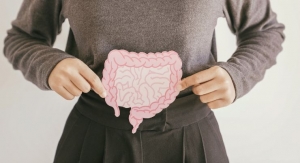04.03.24
A prebiotic fiber identified as rhamnogalacturonan-I (RG-I) marketed by NutriLeads as BeniCaros was able to predictably and beneficially modulate the microbiota compositions of several donors which were captured using a SHIME (Simulator of the Human Intestinal Microbial Ecosystem) model. The in vitro findings, which relied on microbiota samples from multiple donors, were published in Food Hydrocolloids.
“The study results provide further evidence on how complex prebiotic fibers, such as BeniCaros, can reliably deliver health benefits,” said Joana Carneiro, PhD, NutriLeads CEO. “These findings are especially interesting for manufacturers of prebiotic health products aiming to deliver more effective propositions with predictable, consistent gut health benefits.”
The impact of prebiotic fibers is influenced by the complexity of a given fiber, as well as the unique gut microbial composition of each individual. Compared to other fibers, BeniCaros had consistent positive effects across all microbiota tested despite initial differences in their composition, which researchers said was owed to the fact that the fiber had a complex, highly specific structure.
In the study, SHIME analysis was used to study the fermentation kinetics of BeniCaros by the gut microbiota of four healthy donors in parallel.
Short-Chain Fatty Acid Producers Flourished
RG-I, sourced from upcycled carrot pomace, is a complex polysaccharide that belongs to the pectin family, a class of carbohydrates found in the cell walls of carrots and other vegetables. Its molecular structure has a main backbone of repeating units of galacturonic acid and rhamnose, the latter of which carries side chains of different composition and complexity. Arabinan and galactan sidechains are the most abundant.
Despite its complex structure, the fiber underwent rapid fermentation in the proximal colon compartment by many gut microorganisms. The initial fermentation pattern varied among donors, influenced by individual microbiota. After daily supplementation with RG-I for three weeks, the final fermentation characteristics became consistent across all four donors. Fermentation resulted in an increased production of short-chain fatty acids, especially propionate.
The fiber’s side chains, especially arabinan, are preferentially degraded over the RG-I backbone, consistently stimulating bifidobacterial for which arabinose and galactose are preferential growth substrates.
“While different gut bacteria consortia may participate in the successive steps of RG-I hydrolysis, repeated exposure to this high specificity fiber similarly stimulated beneficial bacteria and metabolites known to contribute to the positive effect on gut health across all donors,” said Ruud Albers, PhD, founder of NutriLeads and co-author of the present study.
“The study results provide further evidence on how complex prebiotic fibers, such as BeniCaros, can reliably deliver health benefits,” said Joana Carneiro, PhD, NutriLeads CEO. “These findings are especially interesting for manufacturers of prebiotic health products aiming to deliver more effective propositions with predictable, consistent gut health benefits.”
The impact of prebiotic fibers is influenced by the complexity of a given fiber, as well as the unique gut microbial composition of each individual. Compared to other fibers, BeniCaros had consistent positive effects across all microbiota tested despite initial differences in their composition, which researchers said was owed to the fact that the fiber had a complex, highly specific structure.
In the study, SHIME analysis was used to study the fermentation kinetics of BeniCaros by the gut microbiota of four healthy donors in parallel.
Short-Chain Fatty Acid Producers Flourished
RG-I, sourced from upcycled carrot pomace, is a complex polysaccharide that belongs to the pectin family, a class of carbohydrates found in the cell walls of carrots and other vegetables. Its molecular structure has a main backbone of repeating units of galacturonic acid and rhamnose, the latter of which carries side chains of different composition and complexity. Arabinan and galactan sidechains are the most abundant.
Despite its complex structure, the fiber underwent rapid fermentation in the proximal colon compartment by many gut microorganisms. The initial fermentation pattern varied among donors, influenced by individual microbiota. After daily supplementation with RG-I for three weeks, the final fermentation characteristics became consistent across all four donors. Fermentation resulted in an increased production of short-chain fatty acids, especially propionate.
The fiber’s side chains, especially arabinan, are preferentially degraded over the RG-I backbone, consistently stimulating bifidobacterial for which arabinose and galactose are preferential growth substrates.
“While different gut bacteria consortia may participate in the successive steps of RG-I hydrolysis, repeated exposure to this high specificity fiber similarly stimulated beneficial bacteria and metabolites known to contribute to the positive effect on gut health across all donors,” said Ruud Albers, PhD, founder of NutriLeads and co-author of the present study.




























